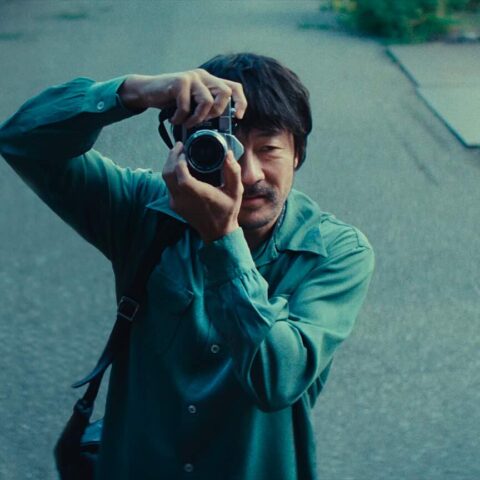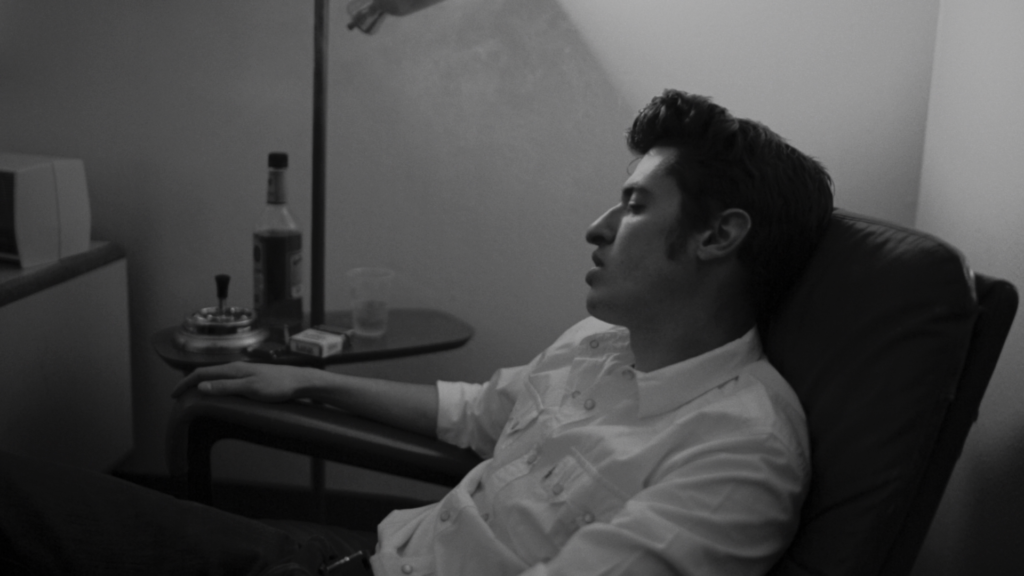
Indie Cinema Magazine is delighted to offer an in-depth look at Darron Carswell’s debut short film, Villa Mink, a distinctive blend of road movie and neo-Western genres. Carswell’s vision reimagines these genres, presenting a compelling exploration of protagonist Rudy Ford’s transformation from a classic cowboy archetype into a more introspective and vulnerable figure. Emphasizing mood and atmosphere, the film challenges traditional Western myths and draws from Carswell’s Kansas background, infusing his critical view of romanticized frontier narratives with the stylistic elements of French New Wave cinema.
“Villa Mink” is described as a “penetrating examination of distorted male identity.” Can you elaborate on how you approached exploring this theme in the film?
“Villa Mink” was conceived of as a hybrid variation on the road movie and neo-Western, a crude, vaguely deconstructed interiorized Western, with the expansive exteriors of each genre turned inwards, the landscapes of the open road and range exchanged for those of a vacant mind. With Rudy, we sought to build up and lean into visual archetypes of romantic figures in American culture, namely the cowboy and the drifter, and then slowly watch the façade deteriorate. Over the course of the picture the cool, composed persona slips to reveal a passive character with unresolved notions of who he is and where he fits in. Visually, the beginning of the film has a flow that the second half lacks, that we wanted to deny the audience. These early, more fluid sequences propel the story, scant as it is, forward, while the second half increasingly ebbs, stalls, and is marked by a progressively clipped editing method.
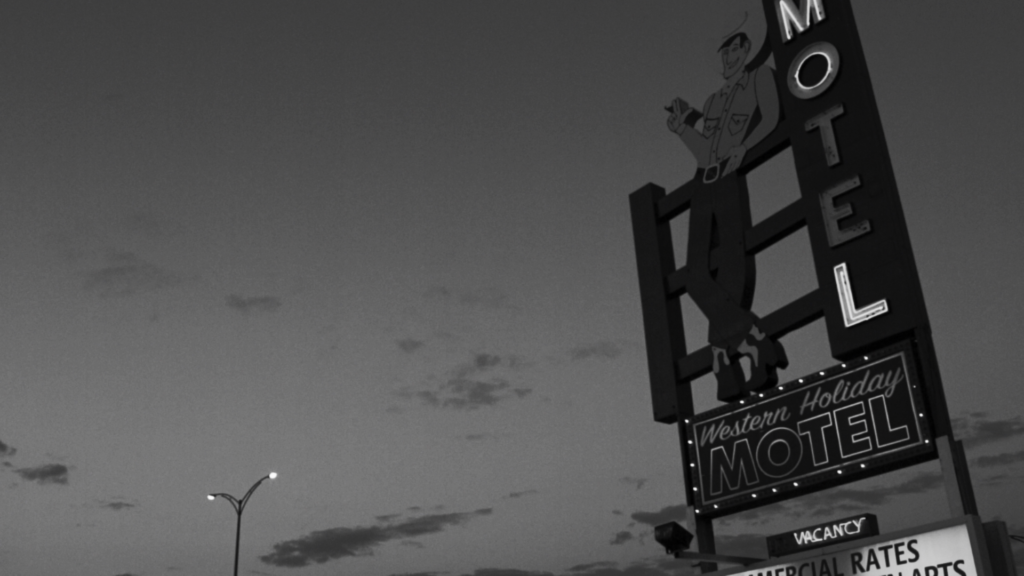
The film appears to be heavily influenced by the Western genre, but with a unique, introspective twist. What drew you to this genre, and how did you decide to subvert its traditional elements?
Being from a Western Kansas town that served originally as a Frontier Wars fort and a subsequent Old West era cowtown, along with the fact that my maternal grandfather was a cattleman, and finally that the Western genre was a favorite of some of my favorite filmmakers, I think being drawn to it was an inevitability. The appeal, the mystique is undeniable, but somewhat troubling, both enchanting and repellant. It’s the most inherently political of classic genres, where combating philosophies are put into high relief as physical action. Things are most often settled through that most American of pastimes: gunplay. But first and foremost, “The West,” is an idea rather than a place, born out of the noxious belief in Manifest Destiny. So, knowing that mass genocide makes up part of the foundation for the genre, the most honest way to approach it for us was through subversion. To take it at face value would be to “print the legend.”
Rudy Ford is depicted as a “loose collection of signifiers in search of a sign.” How did you and the actor, Solomon Alpert, work together to embody this complex, detached character?
I don’t really think Rudy is a complex guy, at least not superficially. He’s certainly not self-aware, so any complexity is running below the surface, but we wanted his inner life to be a deep current to be felt, rather than openly expressed, and I think Sol brought this to the character. We were reminded of Bogdanovich’s decision to cast Timothy Bottoms in “The Last Picture Show,” that the director said he was taken with his “sad eyes.” Sol has a similarly sad, soulful countenance.
I tailored the character for Sol’s strengths through direction and editing, resulting in an acting style that plays on the actor’s physicality; his comportment (the way he saunters, sits hunched), his specificity with physical elements (the way he holds a cigarette, opens a bag) all have a careful, seemingly designed quality of movement, but that is totally organic and unique to him. Over time we moved away from a naturalistic expressiveness toward this further stylized, gestural, deadpan mode that has something in common with someone like Buster Keaton, and as a result much of the humor in the film is owed to Sol’s nearly affectless reactions.
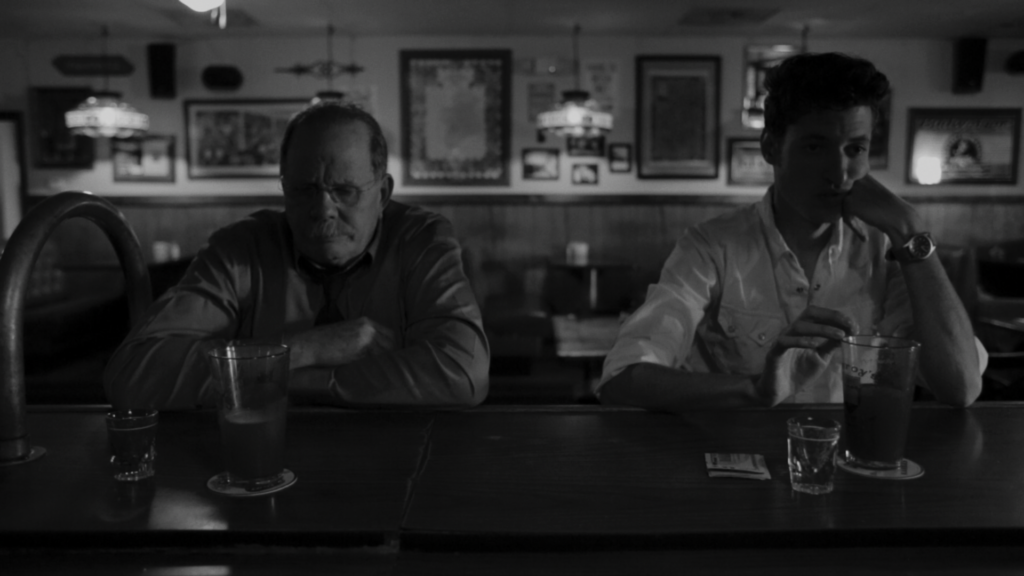
The film’s setting—a dismal roadside motel and a local dive—plays a significant role in establishing the mood. Can you tell us how you decided to choose these locations for filming?
There’s a pragmatism to these choices, having supremely insubstantial resources meant limiting ourselves to few characters and choice locations. Then it was a matter of being honest to the character, thinking about where a guy like Rudy might go for a hookup with his goodtime gal, or what kind of a bar he might haunt. Aside from these practical considerations, the locations have a genuine, lived-in, ramshackle charm that I wanted to capture.
And to be honest, we dig these kinds of places, too. I remember reading Kaurismäki referring to his movies as museums, because he fills them with things he loves. I really like this idea and think it’s both one of the strengths of cinema as an artform, and one of the greatest responsibilities of the filmmaker: to not only observe, but also preserve that which is worthwhile.
You’ve mentioned that “Villa Mink” is free from plot and heavy on atmosphere. How did you ensure that the film maintained the audience’s interest despite its minimalistic narrative approach?
This was a rather foolish challenge we set for ourselves, to make a movie that is, at least in part, about boredom that is not completely boring, while also wanting, at times, to evoke the numbness of boredom, to force the audience to be stuck in the same situation that Rudy finds himself, where a climax, narrative, or otherwise, will not be attained. We were avoiding the strictures of dramatic structure, wondering how little framework would be necessary to enter into and remain in the conjured world of the movie.
I’m not actually sure we met the challenge, but taking this approach really just meant being honest with ourselves, investing in our aesthetic, trying to create the movie we most wanted to see, and had yet to see. It’s an experiment, and perhaps a failed one, but if we did fail, I at least hope it’s a bad movie with a few good moves, to paraphrase Godard.
How did the early films of the New German and American Cinemas, as well as the French New Wave, influence the visual and narrative style of “Villa Mink”?
There’s an evergreen essence to the movies of the Nouvelle Vague, they fortify the soul. They’re pictures to which I’ll always return, because they remind us that cinema is still a living form. That film movement, and those of the New German and New American Cinemas ensuing, had a greater focus on regionally specific locales and subjects than their respective nation’s contemporaneous film industries were offering, so there’s a combination between a sociological examination on an intimate scale with a modern, knowing, political, yet playful sensibility, and an unabashedly personal perspective. It’s in this ethos that we were influenced.
Of the many directors I cribbed, Fassbinder’s early films had a profound impact, not least because some of them possess a rough-hewn, even primitive quality, but the voice, the intention is clear and distinct, from his debut onwards. These movies made me feel slightly less self-conscious about creating with modest means and even less experience, made me willing to accept those limitations so long as the vision itself could be communicated. While our sensibilities are very different, on a practical level, his willingness to eschew typical audience identification with protagonists, his static frames and alienating compositions informed the look and spirit of the movie.
The film was a collaborative effort between you, lead actor Solomon Alpert, and co-writer/composer Douglas Wells, Jr. Can you talk about the creative process among the three of you and how each of you contributed to the final product?
Aside from a couple days during the shoot when we had one of our executive producers, Daryl Eugene, on hand as resident factotum, we had no crew to speak of, it was just the three of us for the majority of the production, so it was a truly collective effort. It was good to know that any ideas I had, they’d either enhance, or come up with better ideas themselves. I’m very grateful to both of them for their dedication and for their sense of adventure and humor, making me laugh throughout each working day. It’s really difficult to quantify exactly what each of us contributed, I can only say that without Douglas and Sol constantly showing up and always being game, the movie wouldn’t exist.
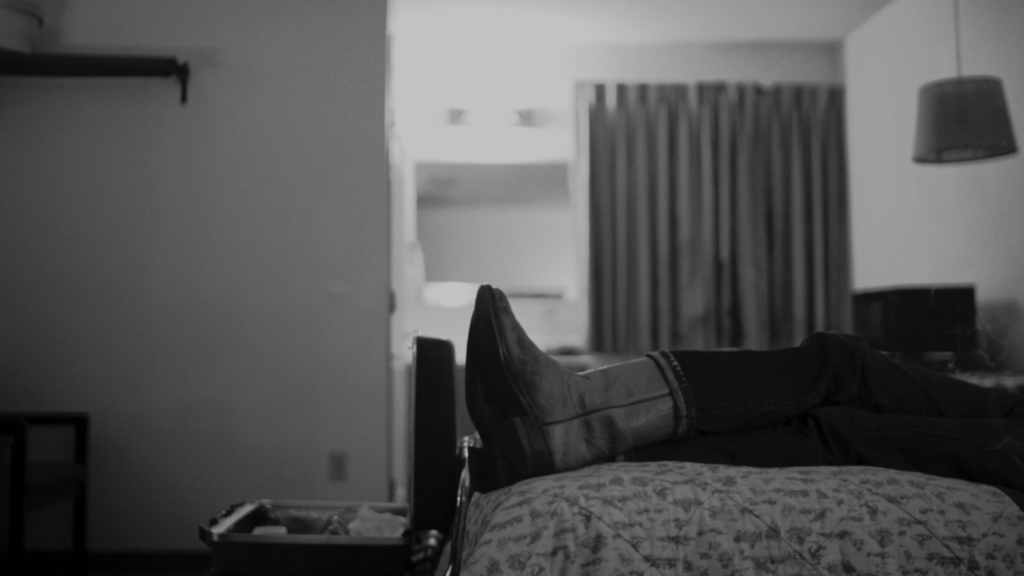
How did your background in film and art history, as well as your experience as a videographer for the United States Department of Arts and Culture, influence your approach to directing “Villa Mink”?
Possessing a background in the history of art allows a greater, more comprehensive appreciation for the power of the image and, naturally, a deeper pool of artistic resources, inspirations to draw from. For example, I poured over the photography of William Eggleston, Stephen Shore, and Fred Herzog during pre-production. I’m not certain how much of this actually found its way into our movie, but these references were helpful in conceptualizing how one might evoke beauty in the banal, poetry in the mundane.
Douglas is the most diligent student of fine arts amongst all of us and his insights were invaluable during my many, inevitable artistic crises of faith. He was, and still is, always eager to talk about the paintings of James Bishop, Agnes Martin, and Robert Ryman. His interest in provisional art led to discussions about how an artwork can be powerful without being aggressive, that it can be unassuming and still exert power through nuance. As Cocteau said, “the work must erase the work; people must be able to say, ‘I could have done that.'”
“Villa Mink” delves into the “unexamined legacies of the mythologized American frontier.” In what ways do you think these legacies continue to influence contemporary American identity, and how does your film address this?
There’s no doubt that the idea of “The West” endures. It’s one of the agreed-upon lies that undergirds the project of American imperialism, and as with any durable ideology, it’s a false consciousness that works on folks both from without and within, something generally unacknowledged but all-pervasive. Western iconography has long been commodified, used to sell anything from lifestyle magazines to pickup trucks, erection pills to foreign policy. We don’t directly address this phenomenon as much as we present an aspect of it and hopefully puncture the glamorous ideal.
Because these legacies so thoroughly permeate society in my part of the world, much of this is baked into the piece, so I don’t want the movie to sound heavier than it is. “Villa Mink” is also a mildly droll Saturday night, Sunday morning kinda tale about a vaguely clueless guy who ties a few too many on after his plans fall through. I hope it works on both levels.
How do you hope audiences will interpret and connect with the themes of isolation, ennui, and the search for identity that permeate “Villa Mink”?
We had somewhat modest aspirations regarding the sense of solitude and ennui in the movie. Primarily, we were interested in creating and sustaining a mood that was appropriate for the character of Rudy, simply through sound and vision. We found out that casting that kind of a spell is much easier said than done, but I hope that we were able to at least approach hitting that bittersweet note, and that the audience can luxuriate in that tone for a time.
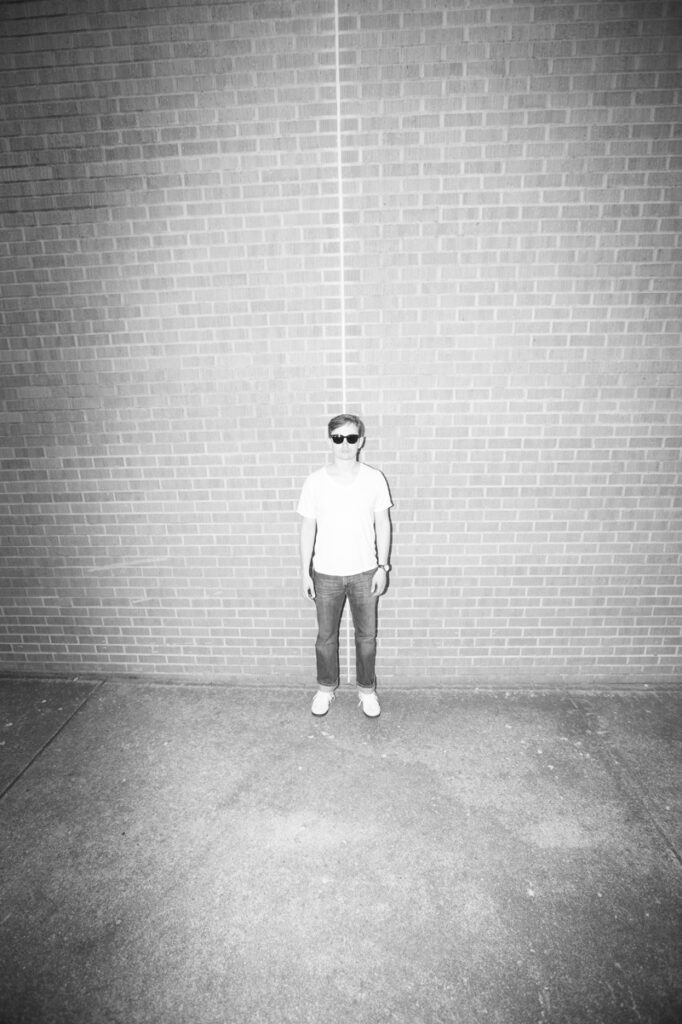
As “Villa Mink” is your debut film, what lessons have you learned from this project, and how might they influence your future work?
This experience has taught me less about how exactly to make a movie and more about how there are thousands of ways to NOT make a movie, that trapdoors, distractions, obstacles, throughout every aspect of the process, lie in wait. I’d hope that in future work I might not make all the same mistakes, and any new mistakes are recognized early and corrected quickly. Aside from that, it’s clear to me just how important interpersonal relationships are when taking on an endeavor as arduous and mad as making a film. To be able to genuinely trust the person next to you is invaluable.
Do you have any upcoming projects that continue to explore similar themes, or are you looking to experiment with different genres and styles in the future? Are you planning to make a feature film anytime soon?
I’ve not a clue what the future holds. I’m constantly taking notes, collecting experiences, accumulating fragments from art, literature, music, seeking the raw materials for something that could be a feature. The catalyst itself is yet unknown, but I’m searching.
